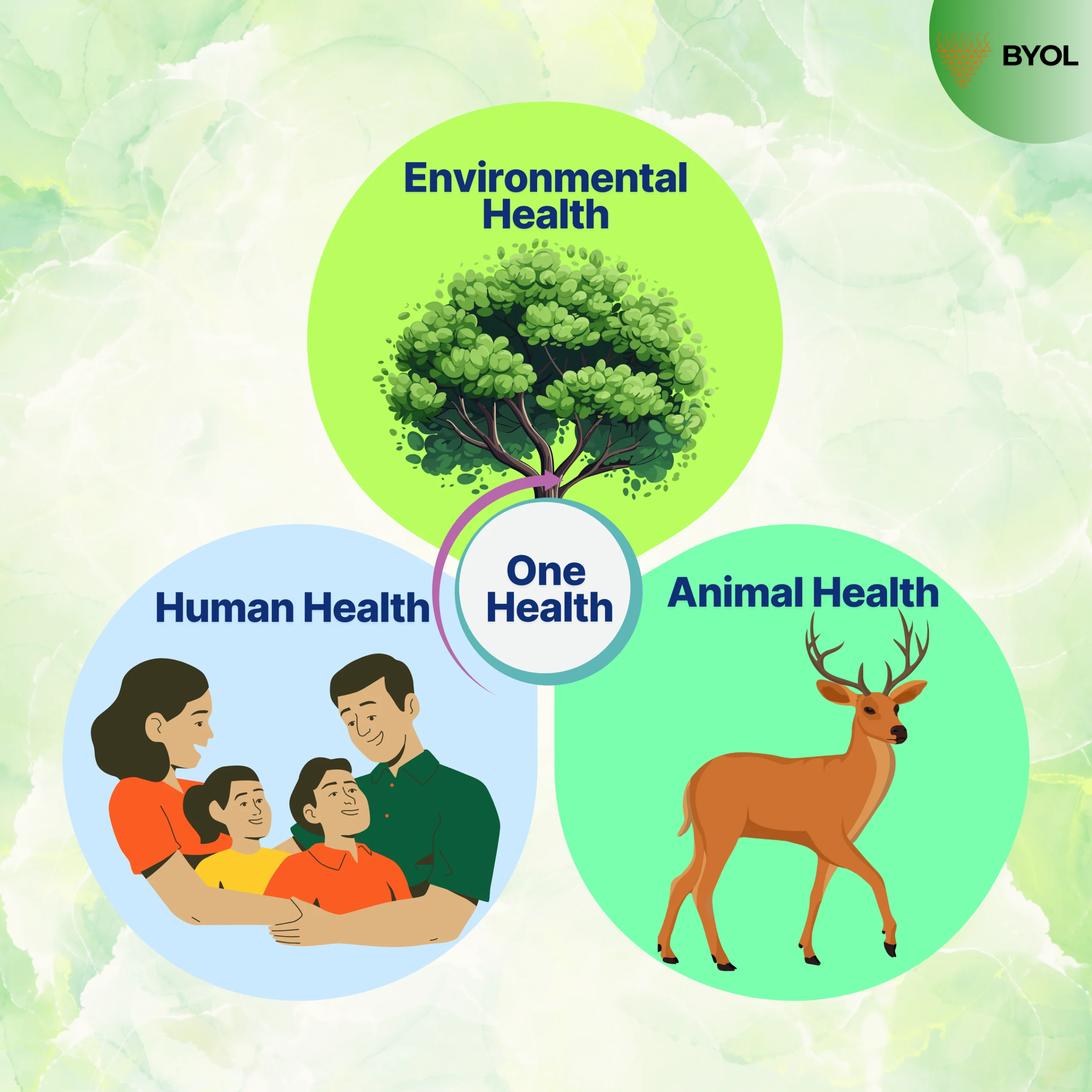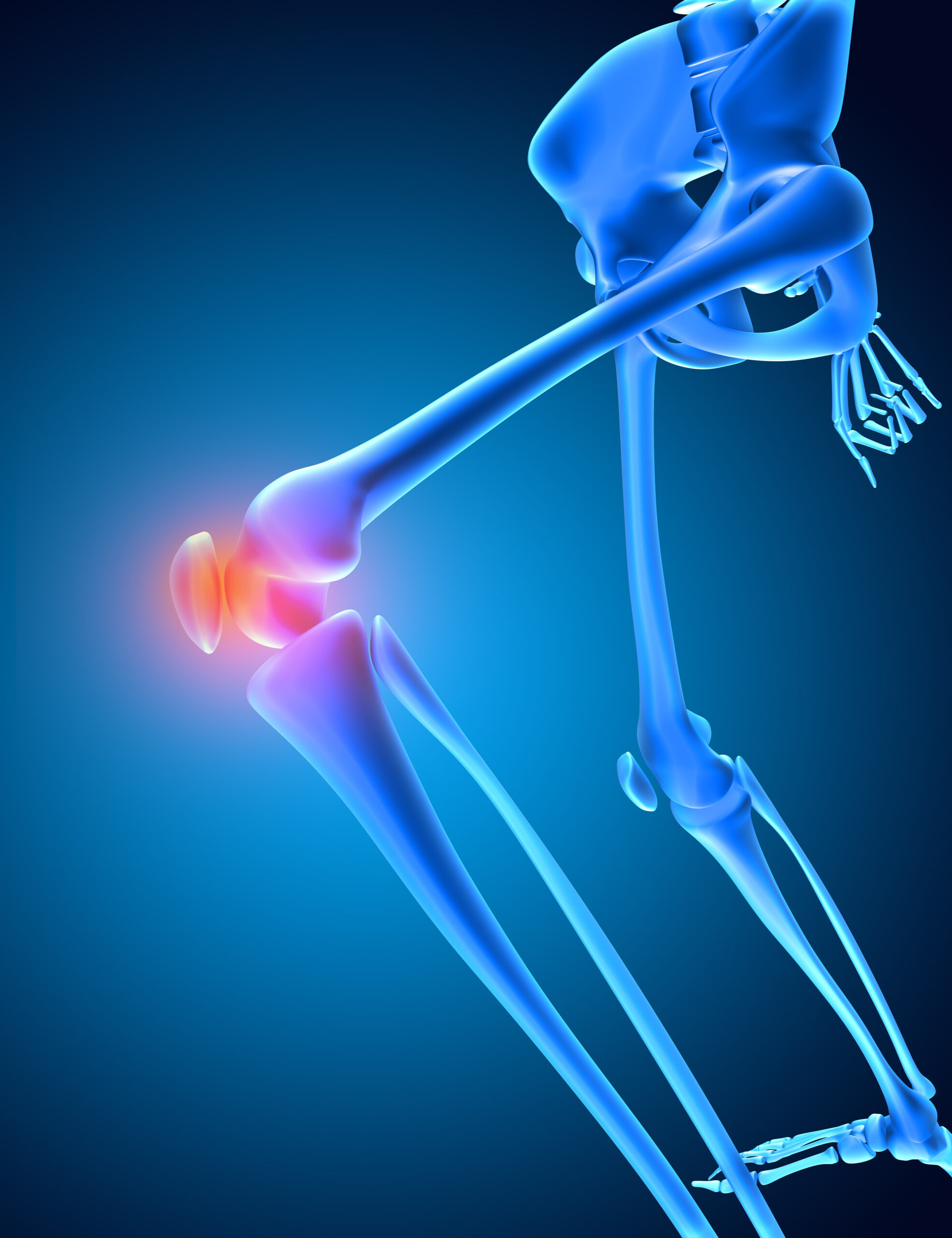One Health is a strategy for investigating infectious diseases that takes into account the interrelationship between humans, animals, and environment. During the last 3 decades, approximately 75 % of emerging infectious diseases among humans have been zoonotic diseases, which are transmitted from animals to humans and vice versa. It was a Veterinary surgeon namely Calvin Schwabe in the United States who made the appropriate analogies for human and animal health, and welfare in the middle of the 20th century, and put forward “One Medicine” as a concept. He stressed the integrated, cross-disciplinary perspective that members of his profession could contribute to general medicine. It has been observed that human activities and stressed ecosystems have produced new conditions for the emergence and spread of diseases. Human practices such as animal trade, agriculture and livestock breeding, urbanization, extraction industries, climate change, habitat fragmentation and encroachment into wild areas have become major factors in the emergence of diseases. By adopting the overall integrated approach, one health is able to address the root cause for the emergence of zoonotic diseases as well as other health risks and issues. When the global outbreak of Severe Acute Respiratory Syndrome coronavirus (SARS-CoV-1) in 2002–2004 started to sweep the world, it clearly showed the kind of danger zoonosis pose for people. It was also made evident by the COVID-19 pandemic how important it is to unite against health threats. The pandemic underscored the importance of resilient and sustainable health systems as well as the need to set up systems and mechanisms capable of preventing or ameliorating threats in respect of the human-animal-plant-environment interface to support sustainable development. Based on lessons learnt from health hazards and disease outbreaks, investment in the One Health approach such as prevention systems, effective monitoring and response mechanisms remains piecemeal and unsustainable. The traditional division between sectors and disciplines make it a daunting task to develop and put into effect an integrated approach. The Manhattan Principles of Conservation, from 2004, call for a more integrated vision of human and animal interrelationships.
Steps Taken by International Organizations with Regard to One Health
- In the future, zoonotic infections will emerge and could become epidemics, pandemics or new strains of antibiotic resistant pathogens. Other health hazards arising from pollution, loss of biodiversity and climate change pose new challenges to our health. This proves a dangerous threat to human lives, animal health and the local economy, endangers ecology and food security and impacts on global trade. A fundamental change of perspective is needed in how disease emergence, re-emergence, spill-over and spread of diseases are addressed and the relationships with adjacent regions are handled.
- Recognizing the importance of cross disciplinary, multi-national working, four global organizations namely The World Health Organization (WHO), the World Organization for Animal Health (WOAH—formerly OIE), the UN Food and Agriculture Organization (FAO) and the United Nations Environment Programme (UNEP) have now agreed to form the One Health Quadripartite. They have identified following six areas to focus on.
i) Laboratory services
ii) Control of zoonotic diseases
iii) Tropical diseases
iv) Antimicrobial resistance
v) Food safety
vi) Environmental health
- The American Veterinary Medical Association and the American Medical Association have embraced the vision for the concept of One Health in 2007 and established the One Health Initiative task force. The task force consolidated U.S. human and animal health agencies, medical physicians, and veterinarians.
- In 2008, the Food and Agriculture Organization of the United Nations (FAO), the World Health Organization (WHO), the World Organisation for Animal Health (WOAH), the United Nations Children’s Fund (UNICEF), the World Bank, and the United Nations System Influenza Coordination (UNSIC) collaborated to create a document entitled “Contributing to One World, One Health-A Strategic Framework for Reducing Risks of Infectious Diseases at the Animal-Human Ecosystems Interface.”.
- The United Nations and World Bank advocated for One Health Approaches adoption in 2010 in the report: “Fifth Global Progress Report on Animal and Pandemic Influenza.”
- The 1st International One Health Congress was organized in Melbourne Australia during February, 2011. Moving from the necessity to grasp the interconnectedness of human, animal, and environmental health, the attendees advocated for including economics, social behavior, and food security and safety disciplines.
Role of Veterinary services in One Health
- Veterinary field has a long history of using veterinary public health principles to safeguard human health and has regulated a number of serious zoonotic diseases in livestock and poultry for decades, successfully preventing the public from becoming infected with these diseases.
- Two significant initiatives that began in the early to mid-1900’s were bovine tuberculosis (TB) and brucellosis. Apart from being transmitted through contact with live animals and carcasses, both of these diseases can also be transmitted via milk. In the early 20th century, roughly 20% of all human cases of TB were due to Mycobacterium bovis, the causative agent of bovine TB. During 1930-1941, the United States reported some 29,600 human cases of brucellosis. Today, as a result of the collaborative state and industry efforts to eradicate these diseases in cattle, both cattle and human cases have plummeted.
- The Centers for Disease Control (CDC) and Veterinary Services regularly work together and with other State animal and human health stakeholders and partners on a regular basis to prevent significant zoonotic diseases such as bovine spongiform encephalopathy, trichinellosis, enteric zoonoses, brucellosis, bovine tuberculosis, and influenza.
- One Health partners collaborate to solve a range of problems that impact animal, human and environmental health. For instance, in 2006, the potential for a pandemic from the highly pathogenic avian influenza A H5N1 virus prompted international coordination of prevention and response efforts. The 2012 outbreak of variant influenza prompted additional cooperation of State animal and public health, academia and industry to investigate the outbreak and to create educational materials and guidance to reduce spread of influenza from people to pigs.
- In 2008, the USDA and the FAO entered into a framework agreement to provide solutions to significant global agricultural concerns like world hunger and, plant and animal diseases.
Key proposals and suggestions
The One Health concept should be applied at all levels, involving all relevant sectors and actors. This starts with creating awareness of the One Health approach among staff, implementing One Health governance in every country that makes its scale feasible, and enabling policies to follow this model. The Quadripartite have drafted a One Health Joint Plan of Action for the Period 2022-2026 (OH JPA) with the following recommendations:
- Increase awareness and advocacy for One Health among the main stakeholders, who must be mapped for every One Health priority because focal points differ in the majority of countries. One Health success relies on firm political commitment, including enhancement of coordination between sectors and disciplines. There should be a shared perception of the One Health approach in accordance with the definition set by the One Health High-Level Expert Panel (OHHLEP). Policy makers and decision-makers need to interact with communities to create awareness of the advantages of the approach, including more focus on prevention and preparation, without undermining response.
- Identify gaps and opportunities through comprehensive and periodic assessment, monitoring and evaluation. Governments at all levels should facilitate development and implementation of One Health action plans utilizing existing tools, surveillance mechanisms and instruments. Sectors should collaborate with the support of regulatory frameworks in making joint decisions on taking action on the findings of the assessment.
- Establish mechanisms to facilitate an overarching One Health governance and coordination framework. The strategy should build on existing solutions and establish mechanisms to facilitate an overarching One Health governance framework. Quadripartite frameworks and coordination systems should be aligned with a whole-of society and whole-of-government approach – encompassing all levels of government, the private sector, civil society, academia and the media. This will assist in ensuring that decision-makers and practitioners within and across health and related sectors can exchange information and collaborate to prevent, detect and respond to health threats.
- Create evidence-based investment or funding business cases for One Health, consolidating initiatives at community to global levels. This must be country-specific and from country priorities or needs, and must target national and sub-national governments and relevant agencies towards investment packages for One Health integration. Aims must progress beyond economic advantage to human development and health, animal wellbeing and health, and ecosystem health.
- Use the Quadripartite One Health Joint Plan of Action as a guide for countries and stakeholders, enabling them to enhance coordination and mainstream the One Health approach at global, regional, national and sub-national levels. Implemented at national levels, these plans must contain suitable, actionable and quantifiable targets; mitigate the threats from re-emerging and emerging zoonotic epidemics and pandemics; control and eliminate endemic zoonotic, neglected tropical and vector-borne diseases; enhance assessment, management and communication of food safety hazards; stem the silent pandemic of antimicrobial resistance; and incorporate environmental issues into all One Health priorities.
- Adopt the One Health approach in all applicable policies in order to enhance the prevention, detection and response to health threats posed by human-animal-plant-ecosystem interconnections. Effective and sustainable communication, coordination and collaboration between these sectors is thus an important element of all initiatives aimed at disease prevention, preparedness and response.
- Support One Health research, knowledge exchange, capacity development and voluntary knowledge transfers by establishing an enabling environment where learning can flourish. This encompasses synergizing and encouraging frameworks and processes such as collaborative learning that supports and encourages One Health action; converging data and knowledge systems; investing in research and excellent researchers in order to enhance our overall understanding and knowledge surrounding One Health; and synergizing the skills of relevant organizations, communities, and Reseach & Development partnerships. Going ahead, this global network of One Health professionals can then be deployed and activated to facilitate capacity building at all levels. Opportunities that arise from such interactions can be utilized for individual, community and institutional learning and exchange at international and national level.
References
HSC Public Health Agency. Notifications of Infectious Diseases (2022). Avaliable at: https://www.publichealth.hscni.net/directorate-publichealth/healthprotection/notifications-infectious-diseases (Accessed October 14, 2023).
World Bank (2021), Safeguarding Animal, Human and Ecosystem Health: One Health at the World Bank, Brief, June 3, https://www.worldbank.org/en/ topic/agriculture/brief/safeguarding-animal-humanand-ecosystem-health-one-health-at-the-world-bank.
FAO/UNEP/WHO/WOAH (2022), “One Health Joint Plan of Action (2022–2026): Working together for the health of humans, animals, plants and the environment”, https://www.who.int/publications/i/ item/9789240059139.
Centres for Disease Control and Prevention. One Health (2023). Avaliable at: https://www.cdc.gov/onehealth/index.html (Accessed October 14, 2023).
Schwabe CW. Veterinary Medicine and Human Health. 2nd ed. London: Ballière, Tindall and Cassell (1969).
One World One Health. The Manhattan Principles (2005). Avaliable at: https://oneworldonehealth.wcs.org/About-Us/Mission/ The ManhattanPrinciples.aspx#:~:text=Recognize%20the%20essential%20link% 20between,functioning%20ecosystems%20we%20all%20require (Accessed October 14, 2023).
Public Health Wales. Health protection (2023). Avaliable at: https://phw.nhs. wales/services-and-teams/health-protection/ (Accessed October 14, 2023). 20. PublicHealthScotland. Notification of Infectious Disease or Health Risk Form(2010). Avaliable at: https://www.hps.scot.nhs.uk/web-resources-container/notification-of infectious-disease-or-health-risk-state-form/ (Accessed October 14, 2023).





